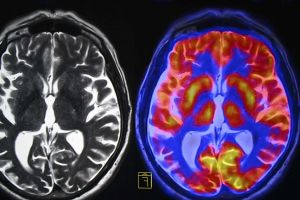Hemiplegic Migraine
Hemiplegic Migraine
What you need to know about
Hemiplegic Migraine
Hemiplegic migraine is an uncommon and severe kind of migraine. Many of its symptoms are similar to those of a stroke; for example, muscle weakness can be so severe that it causes hemiplegia or temporary paralysis on one side of the body.
Symptoms
You may experience various indicators that indicate the onset of a headache before the actual pain. Auras are early signs that can include short-term muscular control and sensory problems:
- Pain that is severe and throbbing, usually on one side of your head.
- A pins-and-needles sensation that travels up your arm from your hand.
- Numbness on one side of your body (arm, leg, and part of your face).
- On one side of your body, you may experience weakness or paralysis.
- Loss of coordination and balance.
- Vertigo or dizziness.
- Vomiting and nausea.
You may also experience difficulties with your senses, communication, or sleepiness:
- Seeing zigzag lines, double vision, or blind spots is a sign that you have a problem with your eyesight.
- Sensitivity to light, sound, and smell is extremely high.
- Problems with language, such as misplacing words or forgetting a word.
- Speech slurred.
- Confusion.
- Consciousness loss.
Auras normally appear over the course of a half-hour, last for hours, and then fade away. They are more severe and continue longer than other migraine kinds.
Stroke-like symptoms can range from concerning to incapacitating. Unlike a stroke, they begin slowly and gradually worsen before disappearing entirely. Muscle pain normally goes away in 24 hours, although it can continue up to a few days.
This sort of migraine does not follow a predictable pattern. The pain usually follows paralysis, but it may occur before or after the paralysis, or you may not have a headache at all. You may be in a lot of pain and just feel a little weak; nevertheless, the following assault may result in severe paralysis with minimal agony.
It’s not frequent, but some people can develop long-term mobility and coordination problems.
Hemiplegic migraine symptoms may begin in childhood or adolescence. When you’re an adult, they may or may not show.
Diagnosis
If you have any of the above-mentioned symptoms, get immediate medical attention. Do not presume you’re suffering from hemiplegic migraine. It’s possible that you’ve had a stroke.
A CT scan or an MRI of your head can reveal stroke symptoms. Blood clot symptoms can be ruled out with tests of your heart and blood arteries in your neck.
If a family member has experienced similar symptoms, your doctor may recommend genetic testing. Familial hemiplegic migraine (FHM) is a kind of migraine that occurs in families and can be passed on to children. People with sporadic hemiplegic migraine do not have difficulties with those four genes (SHM).
Causes
Researchers have discovered four genes that have been associated with hemiplegic migraine so far:
- CACNA1A
- ATP1A2
- SCN1A
- PRRT2
Any of these can cause a breakdown in your body’s capacity to create a certain protein due to defects or mutations. Nerve cells can’t send or receive messages between themselves if they don’t contain it. Serotonin is one of these chemical messengers or neurotransmitters.
A child of a parent who suffers from hemiplegic migraines has a 50% probability of developing them as well.
Treatment
Doctors have differing opinions on how to manage hemiplegic migraines.
Your doctor may recommend medications to help you avoid hemiplegic migraines, stop them once they’ve begun, and ease your symptoms. Your doctor will talk to you about the finest options available to you.
Some medicines that are used to treat other types of migraines are being debated as to whether or not they should be used to treat hemiplegic migraines. Anecdotal data suggest that triptans, beta-blockers, and ergotamine derivatives used to treat hemiplegic migraine patients can cause ischemia.
CGRP inhibitors are a novel class of preventive therapy for treating most common migraines, although preliminary evidence suggests that they are ineffective for hemiplegic migraines.


